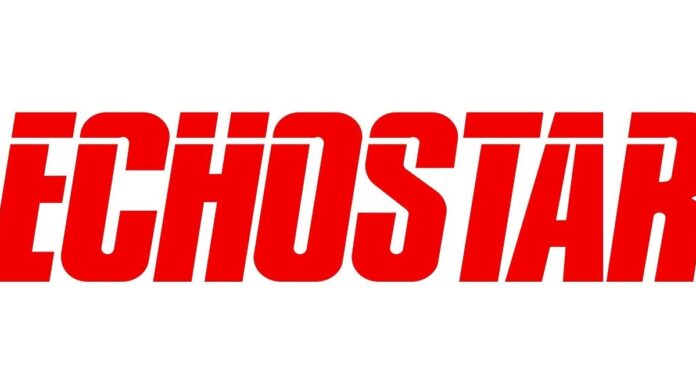EchoStar Technologies is pulling out all the stops to leverage its products and infrastructure to open a fast track to multiscreen services for service providers of every description.
The core magnet to everything it’s offering, from over-the-top and hosted TV Everywhere support services to home gateways and licensing of its technology on chipsets in other OEMs’ set-tops and gateways, is the fact that sister company Sling Media’s platform is a proven ticket to streaming live premium content to multiple devices in the home and beyond. Some of the implications of what these means were seen with the announcement last summer that Time Warner Cable’s New York operation was offering subscribers who take its $99.99 wideband DOCSIS 3.0 service, operating at 50 Mbps downstream and 5 Mbps in return, reimbursement on purchase of a $299.99 Sling Pro HD.
TWC’s New York system already has an iPad streaming service offered at no cost to existing subscribers, which it launched last spring over its broadband Internet channels, resulting in a backlash that forced it to drop channels from Fox, Discovery, Scripps Networks, and Viacom.
In contrast, subscribers who use the Slingbox can stream whatever they want, insofar as its place-shifting capabilities have been generally accepted as legally on par with the fair use rights associated with time shifting.
Meanwhile, notwithstanding TWC’s hassles, the floodgates have opened for live and on-demand streaming of content to connected devices as cable and other SPs pursue various technical strategies aimed at ensuring they stay relevant to users of unmanaged devices. But the legal issues remain clouded.
Cablevision, for example, is offering a connected-device streaming service encompassing its full channel lineup with the iPad as the first target and other devices to be added later. The MSO claimed that because it was using its proprietary digital network with the aid of switched digital video (SDV) technology to deliver the dedicated IP streams to users on their iPads, it was acting within its rights under existing contracts.
Viacom and YES, the Yankees and N.J. Nets ports network, have disagreed. Viacom filed and then settled a suit with Cablevision, which continues to stream Viacom content but without the latter acknowledging any change in its legal stance. YES remains opposed, according to recent press reports, but has not taken legal action.
Cox, too, has launched an iPad streaming service involving 35 channels (see p. 12) but with no public pushback from content providers who are in the mix, including Fox, Discovery, and Scripps. The service does not carry any Viacom channels.
With SPs hungry for streaming solutions that won’t land them in court, EchoStar Technologies has the advantage of incorporating a solution, namely Sling, into all its service and product offerings that provides SPs assurance they’re protected on the multi-device service side. It’s a strong selling point, says Alistair Chatwin, product manager for EchoStar Technologies.
“Using our industry-accepted Sling Media transcoding capability at the set-top box, we’re moving linear content from the QAM-delivered linear to an IP-delivered adaptive rate streaming mode,” Chatwin says. “All the existing linear content from the headend is delivered over the service provider’s network using cable card technology. And then we use two different MPAA-approved DRM technologies for our IP feeds from the set-top.”
Along with marketing this capability to SPs in conjunction with its lineup of set-tops and gateways, EchoStar has cut deals with chip suppliers Broadcom and ViXS enabling them to embed the key library and other functionalities of Sling Media in other OEMs’ set-tops and gateways. “A lot of these gateway devices actually have a transcoder integrated, and so we’re able to provide a library so that any STB manufacturer [using Sling Media-enabled processors] can offer Sling technology to the cable operator,” Chatwin says.
EchoStar Technologies is also using the technology in conjunction with a cloud-based over-the-top wholesale service which it first launched last year to serve the needs of smaller operators. Aria, as the service is called, is targeted to operators with anywhere from a few thousand to a million subscribers to provide them “all the tools and all the technology the larger operators have access to,” Chatwin explains.
Aria leverages EchoStar set-top technology and a massive data center and MPLS (Multiprotocol Label Switching) infrastructure in combination with its content aggregation business to support cloud-based VOD, TV Everywhere, and universal navigation across legacy linear, VOD, and other OTT content on all devices. The legacy linear streams are integrated at the set-top with the OTT-delivered VOD content to support all these functionalities, including Sling-enabled IP streaming of all content to unmanaged devices.

As big MSOs develop their cloud strategies in conjunction with multiple approaches to how headend and home devices are configured, smaller operators no longer have the luxury of leveraging products mass-produced for the big guys as they’ve always been able to do with succeeding generations of headend gear and set-tops, Chatwin observes. Rather than being left behind, smaller operators can compete against big providers, including DISH, Chatwin says, noting the marketing tagline for Aria is “Your competition is now scared.”
Aria is moving into field trials with at least two unnamed customers. Meanwhile, EchoStar is leveraging the OTT infrastructure to serve a broader potential customer base, including individual content providers, CE manufacturers, and big service providers who may have an interest in extending premium service capabilities over other providers’ broadband links. One of the key components of the evolving OTT support service will be network DVR, according to EchoStar chief product officer John Paul, who went public with those plans at last year’s TelcoTV conference in New Orleans.
With nearly 200,000 square feet of data center space throughout the U.S. and one of the largest MPLS networks, EchoStar can provide such services much more cost-effectively than individual providers might be able to do with the construction of their cloud infrastructures, Chatwin notes. “What it means is we’re able to ingest it once into our network and then provide it out to any number of subscribers,” he says.


